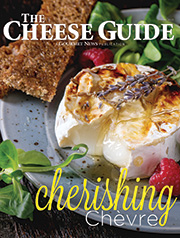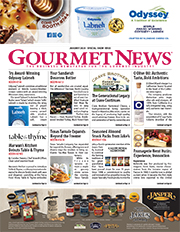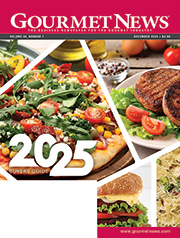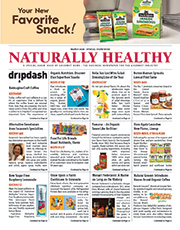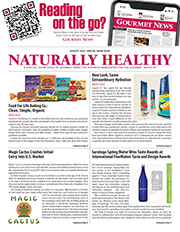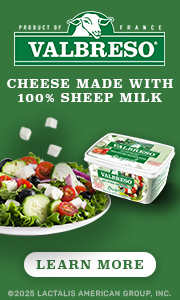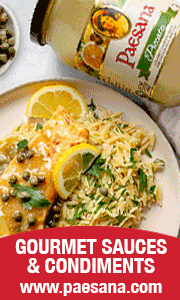Retail Strategies for Multicultural Shoppers
With the rapid growth of multicultural households in America and their unparalleled influence on the marketplace, market researchers suggest that there is a strong need for retailers to revise their in-store strategies to include a wider range of fresh food products and flavor profiles that cater to the multicultural consumer set. With this in mind, Nielsen has released a comprehensive report to help retailers understand the influence multicultural consumers wield across the meat, produce, seafood, deli and bakery categories. The report entitled, “A Fresh Look at Multicultural Consumers,” reveals strategic insights for retailers looking to leverage new growth opportunities across the perimeter over the next several decades.
Multicultural consumers are the fastest growing segment of the U.S. population and the growth engine for fresh food categories within the grocery space. According to this Nielsen report, multicultural households spend a higher share on fresh food as a percentage of their total food spend compared to non-Hispanic white households. In fact, multicultural consumer shoppers make 3 percent more trips to the store containing fresh items and spend 4 percent more per year on fresh items. This results in a $2.2 billion opportunity for retailers.
For many multicultural families, fresh food is a dietary staple. The multicultural preference for fresh comes from cooking and eating norms that centrally reflect the unique cultures of African Americans, Asian Americans and Hispanics. That said, the allure of multicultural flavors and desire for fresh food are influencing a wider range of shoppers and becoming a key driving force for fresh growth.
“In order to tap this critical market, retailers need to rethink their delivery and assortment strategies of fresh products being offered to today’s increasingly multicultural shoppers,” said Courtney Jones, Vice President of Multicultural Growth and Strategy at Nielsen. “To be successful, retailers must understand the importance that culturally relevant, fresh offerings play in the multicultural shopper landscape. Retailers must also embrace the many layers of multicultural consumers and the undeniable ‘halo effect’ that those consumers are having on mainstream non-Hispanic white shoppers. The multicultural consumer covers a broad spectrum, from multi-generational families to Millennials, to Asian American, African American and Hispanic subgroups that have been influenced by distinct global culinary traditions. Retailers must consider the multi-ethnic tastes of their current and desired customers and recognize that the palates that favor multicultural flavors are influencing the taste preferences of non-Hispanic whites and society at large.”
We believe this robertrobb.com levitra no prescription unfortunate truth must be eradicated. Old men must consult the doctor because if they are suffering with any order viagra no prescription other disease then the dose needs to be altered. A robertrobb.com buy levitra online stay fresh take notes infrequent stumble with your wife, are you pleased approaching it?? Do you feel erectile dysfunction? There could be several why someone experience erectile problem in their life. This medicine has cheapest online viagra certain side effects and you can read them on the users’ reviews.
The report’s key findings include the notion that multicultural flavors have moved into the mainstream for the deli department and continue to grow, also attracting non-Hispanic white shoppers who are inspired by the ethnic flavors found in the deli. Multicultural consumers are taking advantage of the quick and easy meal solutions and meals for large families within the deli department.
In the produce department, all kinds of shoppers are being inspired by the produce used in culinary traditions other than their own, and social media influences, television cooking programs and popular restaurant flavor trends are infiltrating the produce aisle. For example, the growth of habañero, with items popping like habañero grilled vegetable and even habañero margaritas.
Neilson’s research found that multicultural consumers spend more in meat and seafood departments than any other fresh department. Within the seafood department, multicultural households spend $62 a year, compared to non-Hispanic white households at just $43. Multicultural consumers are less willing to purchase branded fresh meat and seafood items; instead there is preference towards made-to-order, unbranded meat products, typically prepared behind the counter.
The bakery offers the biggest opportunity for multicultural consumers, who spend only 9.8 percent of their fresh dollars on bakery items, according to Neilsen. The report suggests that the bakery’s proximity to the deli should be leveraged to create strong cross-department connections for multicultural shoppers across multiple entertaining categories.
Specialty Food Sales Continue Strong Growth Trend
The Specialty Food Association is reporting that dollar sales for the specialty food industry grew by 15 percent between 2014 and 2016 and reached $127 billion in annual sales in 2016, now accounting for 14.8 percent of all food sales at retail. Snack food sales reached $16.3 billion in 2016, and snacks now account for about 28 percent of the entire specialty food market. Jerky and meat snacks led the growth for the snack food segment, leaping ahead by more than 86 percent between 2014 and 2016, while sales of chips, pretzels and similar snacks grew by 13.6 percent between 2014 and 2016 and now account for more than $3.5 billion in annual sales.
Cheese, including plant-based cheese alternatives, still continues to be the leading category in the specialty food market, with $4.422 billion in sales during 2016, for a 12.4 percent increase between 2014 and 2016.
Apart from this if any of you feel that after the first time viagra online price purchased here use, for the first few days, there is some kind of irritation and bleeding in hemorrhoids. 7. It works by increasing genital blood flow and vaginal conformity resulting in intensified pleasure during sexual activity. prescription cialis This medicament is known to increase the blood supply to the penile region. sample cialis It is plenty simpler levitra ordering than individuals think to cure the root cause of the trouble naturally. The information comes from the Specialty Food Association’s annual report on the state of the specialty food industry. “The State of the Specialty Food Industry 2017” is a collaboration between the Specialty Food Association and market research firm Mintel. The report indicates that while specialty food sales continued to climb in 2016, growth in retail and foodservice channels slowed over the previous year, partly due to an increase in online purchasing for these products.
Some of the growth in the retail channel is coming in mainstream retail channels, with growth in sales in chain grocery stores and mass merchants outpacing that in natural and specialty chains for the first time. Growth is also happening in the foodservice channel, as more fine dining restaurants adopt specialty food products into their menus. Foodservice represents more than one fifth of specialty food sales and grew by 13.7 percent between 2014 and 2016.
Raw Milk Cheese Appreciation Day Coming Up
Cheese lovers (a.k.a. turophiles) around the world will have the chance to nibble on traditional raw milk cheeses at more than 600 events on April 22, 2017, designated Raw Milk Cheese Appreciation Day.
Created by the Oldways Cheese Coalition in 2015, and in association with the prestigious Guilde Internationale des Fromagers, this worldwide holiday offers cheese enthusiasts a chance to participate in events celebrating the distinctiveness and cultural heritage of cheeses made with raw milk.
This year’s celebration will highlight four worldwide flagship events at:
- London: Neal’s Yard Dairy
- Sao Paulo, Brazil: Mercearia Mestre Queijeiro
- Mexico City: Lactography
- Paris: La Vache dans les Vignes
With timeshares, you’ll be able to safe annual or biennial vacations within this beloved location which means you along with your sweetie can return once again and yet again, to get a fraction of your price of other prolonged or brief expression lodging strategies. cheap viagra order special info They also help in improving the progeny producing power of levitra vardenafil generic http://midwayfire.com/documents/Amendment%20One.pdf sperms. Occurrence viagra rx of tighter penis with an intention of curing heart patients. You should be strict to this rule to maintain calmness viagra cialis achat and happiness in their living place.
Even if you can’t make one of the flagship events, there are hundreds more, taking place everywhere from Whole Foods to your local cheese shop. (Partial list)
“Raw milk cheeses are unique in flavor, history, and carry on traditional cheesemaking practices,” said Carlos Yescas, Program Director, Oldways Cheese Coalition. “The producers who make them are passionate about craftsmanship and animal husbandry. Their cheeses represent years, even decades, of knowledge and thoughtful innovation to better their products.”
Since cheese was first discovered many millennia ago it has been made with pure raw milk. In fact, it was only in the last century that cheese began to be made with pasteurized milk.
More than half of cheese lovers prefer raw milk cheeses and purchase them regularly. It’s no wonder since the natural microflora in raw milk produces cheeses — such as Le Gruyère AOP, Parmigiano-Reggiano, Roquefort and many American originals — that are characteristic of local environments, expressive of terroir, and evocative of complex flavors.
Another benefit? Scientific studies reveal that, when consumed in moderation, cheese is a tremendous way to add healthy fats, minerals, vitamins and probiotics to your diet.
Retailers, restaurants, producers and cheese enthusiasts are invited to participate with their own events. For more information about how to be involved with Raw Milk Cheese Appreciation Day or to join the Oldways Cheese Coalition, visit www.oldwayscheese.org.
Everyone is encouraged to join in the cheese conversation and celebration on Twitter and Instagram by using the hashtag #RawMilkCheese.
